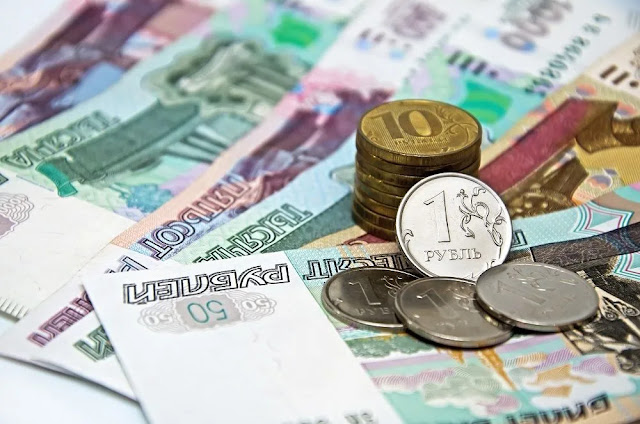South Korea: A Global Powerhouse of Innovation, Culture, and Diplomacy
South Korea, officially the Republic of Korea, is a dynamic and globally influential nation known for its remarkable blend of technological innovation, cultural exports, and economic resilience. Nestled in East Asia, South Korea has emerged as a pivotal player on the global stage, shaping trends and setting benchmarks across industries. This article explores South Korea's multifaceted impact on the world, emphasizing its advancements in technology, the global reach of its cultural phenomena such as K-pop and dramas, and its strategic economic and diplomatic achievements.
Table of Contents
South Korea's Technological Advancements
The Rise of Tech Giants
Innovations in Artificial Intelligence
5G and Digital Connectivity
Cultural Influence: The Hallyu Wave
The Global Phenomenon of K-pop
The Rise of Korean Dramas
Impact on Global Fashion and Beauty
Economic Powerhouse
Key Industries Driving Growth
Trade Relationships and Global Impact
Diplomacy and Soft Power
Strategic Alliances
Contributions to Global Organizations
Balancing Tradition and Modernity
Challenges and Future Prospects
1. Introduction
South Korea's journey from a war-torn nation in the mid-20th century to one of the world's leading economies is nothing short of remarkable. The country has carved a niche for itself, offering the world a model of resilience, innovation, and cultural richness. From Samsung and Hyundai leading technological revolutions to BTS and Blackpink captivating global audiences, South Korea's contributions resonate across continents.
2. South Korea's Technological Advancements
The Rise of Tech Giants
South Korea is home to some of the world's most prominent technology companies, including Samsung Electronics, LG, and Hyundai Motors. Samsung, in particular, dominates the global smartphone and semiconductor markets, consistently ranking as a top brand. LG leads innovations in home appliances, while Hyundai spearheads the shift to electric and hydrogen-powered vehicles.
Innovations in Artificial Intelligence
South Korea is at the forefront of AI research and development, investing heavily in this transformative technology. The government has established policies to make the country a global hub for AI, fostering innovation through startups and collaborations with tech powerhouses.
5G and Digital Connectivity
As the first country to roll out a nationwide 5G network, South Korea is a leader in digital connectivity. The ultra-fast internet speeds have catalyzed advancements in industries like gaming, virtual reality, and autonomous vehicles, placing South Korea at the cutting edge of the digital age.
3. Cultural Influence: The Hallyu Wave
The Global Phenomenon of K-pop
The rise of K-pop has been nothing short of meteoric. Groups like BTS, Blackpink, and EXO have amassed massive international fan bases, breaking language and cultural barriers. K-pop's unique blend of catchy tunes, high-energy choreography, and visually stunning aesthetics has captivated millions, turning South Korea into a global cultural powerhouse.
The Rise of Korean Dramas
South Korean dramas, or K-dramas, have also gained immense popularity worldwide. Hits like Crash Landing on You, Squid Game, and The Glory have showcased South Korea's storytelling prowess. These dramas have not only entertained but also introduced global audiences to Korean traditions, food, and landscapes.
Impact on Global Fashion and Beauty
South Korea is also a trendsetter in fashion and beauty. Korean skincare routines, popularly known as "K-beauty," have revolutionized the global cosmetics industry with innovative products like sheet masks and serums. Seoul's fashion scene, with its mix of street style and high fashion, is increasingly influencing global fashion trends.
4. Economic Powerhouse
Key Industries Driving Growth
South Korea's economy thrives on a diverse range of industries, including technology, automotive, shipbuilding, and entertainment. The semiconductor industry, led by Samsung and SK Hynix, is a cornerstone of the global tech ecosystem.
Trade Relationships and Global Impact
South Korea's robust trade networks and free trade agreements have cemented its status as an economic leader. The country plays a pivotal role in the global supply chain, especially in electronics, automotive components, and cultural exports.
5. Diplomacy and Soft Power
Strategic Alliances
South Korea's strategic alliances with countries like the United States and its active participation in international organizations such as the United Nations highlight its diplomatic influence. As a key player in regional and global politics, South Korea navigates complex relationships with neighboring countries like North Korea, China, and Japan.
Contributions to Global Organizations
South Korea contributes significantly to global initiatives, including climate change mitigation and humanitarian aid. The country's leadership in renewable energy and sustainable development underscores its commitment to global well-being.
6. Balancing Tradition and Modernity
One of South Korea's most striking features is its ability to balance tradition with modernity. The juxtaposition of ancient palaces like Gyeongbokgung against the ultramodern skyline of Seoul reflects the nation's respect for its history while embracing the future. Traditional festivals, hanbok (traditional clothing), and cuisine coexist harmoniously with cutting-edge technologies and urban lifestyles.
7. Challenges and Future Prospects
Despite its successes, South Korea faces challenges, including an aging population, housing affordability, and geopolitical tensions. However, its focus on innovation, sustainability, and cultural diplomacy positions it well for continued growth.
8. Conclusion
South Korea's global impact is undeniable, with its influence spanning technology, culture, economics, and diplomacy. The country's ability to innovate while honoring its traditions makes it a unique and powerful force in the modern world. As South Korea continues to thrive, understanding its journey and contributions becomes essential to grasping broader global trends.
South Korea, K-pop, Korean dramas, Samsung, Hallyu Wave, K-beauty, 5G technology, Korean culture, South Korea economy, Korean innovation, North Korea, martial law in South Korea, Yoon Suk Yeol, South Korea news, Seoul, South Korean president, Kim Jong Un, South Korea parliament, Korean won, Lee Jae-myung,
#SouthKorea, #Kpop, #HallyuWave, #KoreanDramas, #Samsung, #KBeauty, #KoreanInnovation, #5GTechnology, #GlobalEconomy, #CulturalDiplomacy, #MartialLaw, #SouthKoreaNews, #Seoul, #NorthKorea, #KimJongUn, #YoonSukYeol, #LeeJaeMyung, #KoreanCulture, #SouthKoreaEconomy,





.jpeg)
.jpeg)






















.jpeg)












